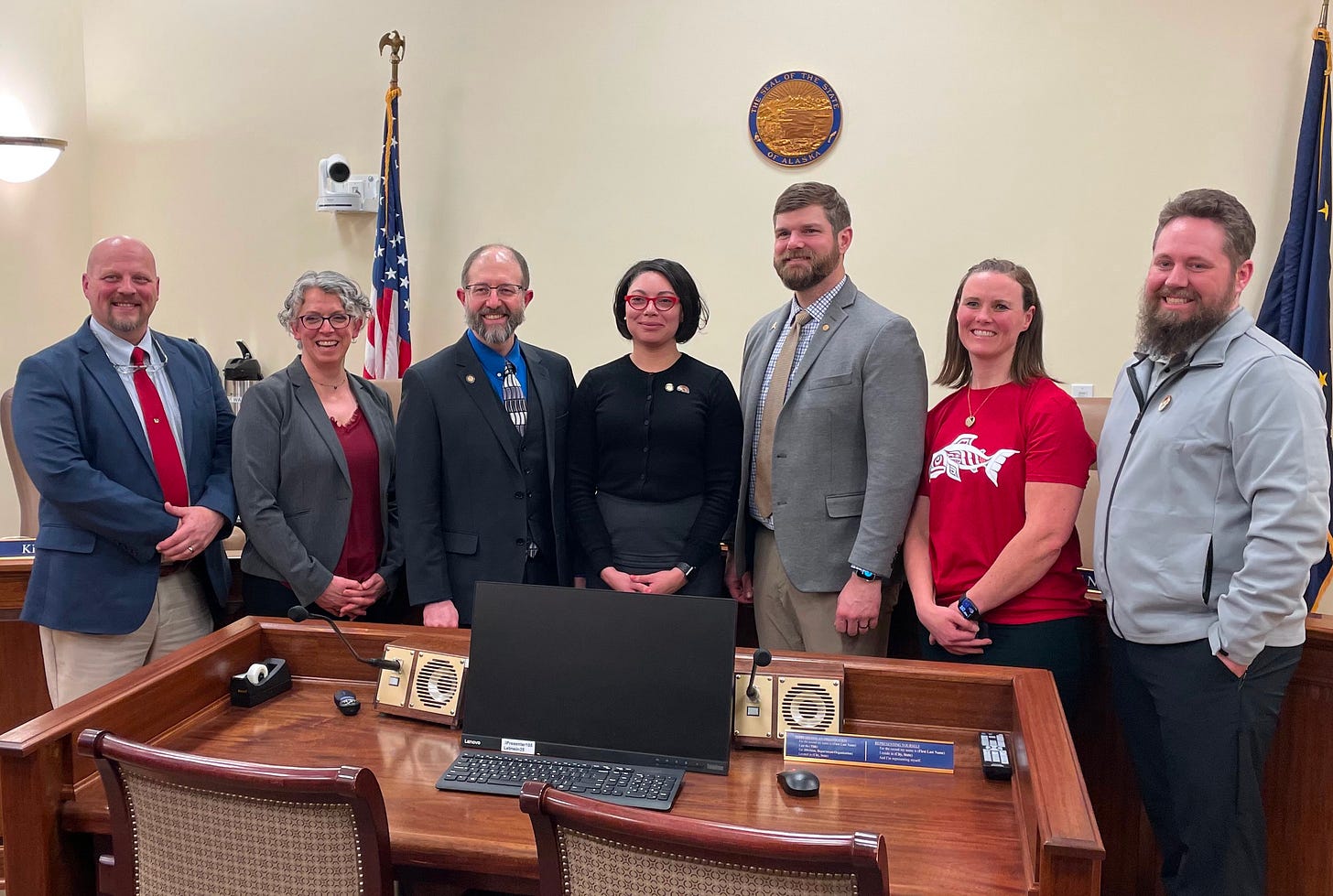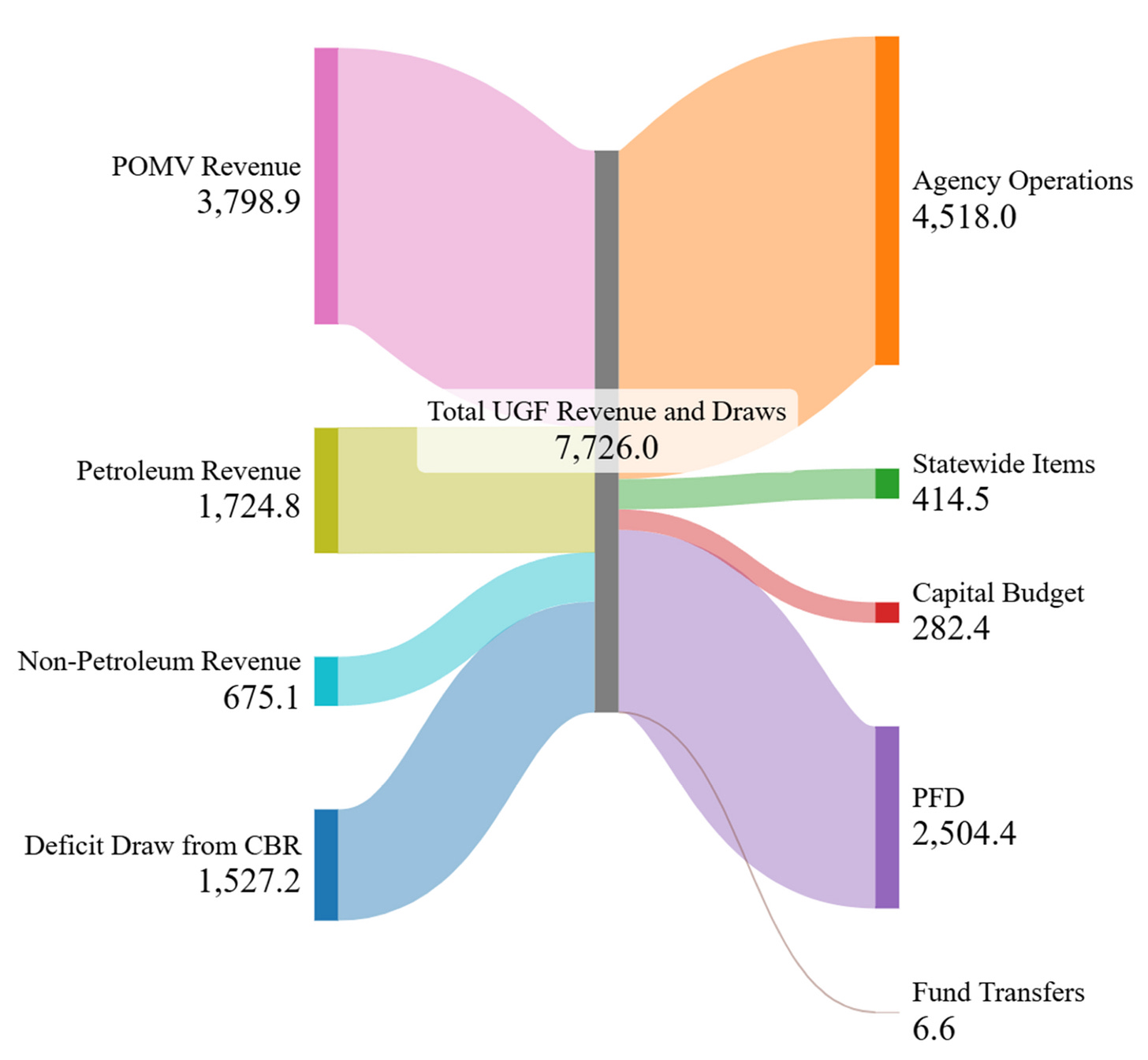Increasing funding for schools, a state budget update, and then what comes next.
A transitional budget, status of education funding, and what to expect as we near the end of the legislative session.
Dear Friends and Neighbors,
Last week, the Alaska State Senate sent the operating budget for Fiscal Year 2026 back to the House of Representatives. As expected, the House did not agree with the Senate's changes. On Monday, members from both chambers will join a conference committee to discuss the differences between the Senate’s budget and the House’s budget. With only two weeks left in the session, we aim to finalize a budget for the Governor by May 21st.
This year’s Senate operating budget includes some important increases:
A $700 boost in base student funding
A 10% increase for school busing
$19 million for K-12 school maintenance
$5 million for maintaining University of Alaska facilities
$50 million for state wildfire response
However, the state faces a serious financial challenge. Revenue from the oil and gas industry is falling, and it is expected to decline even more in the future. This situation requires urgent and careful action to avoid more financial problems.
Decisions made over the past decade have led to a situation that many anticipated. In 2018, the Alaska State Legislature passed a bill that limited the annual withdrawal from the Permanent Fund to 5% of its market value. This measure aimed to protect the Fund's principal from unsustainable withdrawals by the state government.
Back in 2018, it was predicted that conflicts would arise between the Permanent Fund Dividend and the funding of essential government services if new revenue sources were not introduced. The challenges Alaska faces today were indeed foreseen by many lawmakers.
The state’s primary revenue source—oil taxes—has declined since the passage of SB 21, which changed the oil tax structure. Since 2013, market fluctuations in the oil and gas industry have made dependence on oil taxes unreliable and detrimental to essential state services.
This revenue drop impacts the state’s ability to fund vital services and has broader economic effects. Consequently, legislators are turning to the Permanent Fund for support in areas like education, snow plowing, public safety, and the Marine Highway. However, drawing from the Permanent Fund reduces the amount available for dividends.
This situation raises concerns for both the current and future budgets. As legislators debate oil tax reform and potential new revenue sources, it’s essential to find a solution.
Maintaining the status quo is not a sustainable option, and the consequences will be significant. Without generating new revenue, we are facing the imminent end of the Permanent Fund Dividend, and the annual 5% draw on earnings will soon be insufficient to cover essential government services.
Okay, now let’s look at the data.
Many people believe that Alaska's problems come from government spending rather than a lack of revenue. However, the graph shows this is not true.
The green bar shows government agency spending, which has stayed steady since Fiscal Year 2014. The Governor and the Legislature deserve praise for managing everyday agency costs well. The blue bar represents state debt, community support for local governments, and funds for programs like Power Cost Equalization. The red bar shows that capital investments have decreased over the years, while the grey bar shows the Permanent Fund Dividend.
The main issue highlighted by the graph is that the 5% draw from the Permanent Fund has become the biggest source of revenue for Alaska. As the state relies more on this fund, there is a greater risk of taking out more than it earns. Overdrawing from the Permanent Fund could harm Alaska's future and leave the state without stable revenue or a fund to depend on.
The final graph shows the budget for Fiscal Year 2025. The Permanent Fund (POMV) has become the largest source of money for state services. If it runs out, we will face serious problems.To further punctuate the reality Alaska faces, this final graph shows the budget for Fiscal Year 2025. The Permanent Fund (POMV) has become the largest funder of state services. If it goes away, we’ll be in a whole heap of troubles.
For more information and a detailed analysis, check out the Legislative Finance Division Overview of the Governor’s Budget Request.
It’s wrong to hold badly needed Alaska school funding hostage to political agendas
Our country carries a complicated legacy of using education as both a tool for assimilation and a privilege reserved for the affluent.
When our state’s constitutional delegates established the right to a public education, it was a time when many children were still being sent to regional boarding schools, where their cultural identities were often stripped away. This history reminds us of the importance of working tirelessly to create a quality education system accessible to all children — a mission that remains one of the most significant endeavors for policymakers and everyone who cares about the future.
At its heart, education is about empowering children to realize their fullest potential and become valued members of our communities. Public education serves as a lifeline, ensuring that every child, no matter their circumstances, has an equal chance to pursue their dreams. It’s about leveling the playing field so that where a child lives or their family’s financial situation doesn’t determine their future.
Read the rest of my opinion editorial printed in the Anchorage Daily News on Saturday, May 10th.

What is open enrollment?
Recent news reports indicate that the Governor may veto House Bill 57, which proposes a $700 per student increase in base student funding, or he might block this year's school funding appropriation if he doesn't get another chance to impose controversial policies on the public without proper vetting.
Over the next few days, I will analyze many of the proposed policies to help my readers better understand what is being suggested.
Earlier this year, the Senate Education Committee held hearings on SB 82, the Governor’s omnibus education bill, which includes establishing a one-size-fits-all statewide open enrollment policy advocated for by out-of-state school choice supporters.
While I recognize the value of locally designed enrollment policies that allow parents to choose the best school options for their children, such as immersion programs and charter schools, SB 82 would introduce a first-come, first-served enrollment system for every school in the state. On enrollment day, parents can apply to enroll their child in any school they choose, regardless of whether they live in that school district. If a child's name is first on the list, they gain admission to their chosen school.
This policy would eliminate Anchorage's lottery system, which is designed to be more equitable and fair. It would also prohibit charter schools from having any other application requirements, such as an introductory meeting with a parent. Moreover, it would allow Mat-Su students to attend Anchorage schools like Government Hill, Aquarian Charter School, or Turnagain Elementary, potentially displacing local students.
Open enrollment does not improve student outcomes. Instead, it encourages students and families who have the means to choose schools outside their neighborhoods, which will further weaken support services for struggling students. It fails to provide targeted assistance for struggling readers or to invest in improved curricula and evidence-based strategies for enhancing education outcomes.
We need to look no further than the harmful impacts already seen in local school districts. Many correspondence programs offer statewide enrollment, and thousands of children from Anchorage are enrolled outside the school district. This diminishes not only state funding but also the local contributions the Municipality of Anchorage can make to support our schools.
Additionally, the open enrollment language in SB 82 diverts funds away from the classroom by requiring districts to cover transportation costs for these students. Alaska’s public school districts located on military bases cannot adopt such a policy, as it could displace military families.
While many Alaskan school districts already have in-district open enrollment, SB 82 imposes a one-size-fits-all approach that risks displacing local students and further undermining neighborhood schools. Research shows that open enrollment harms low-income neighborhoods, leading to declining enrollment and exacerbating economic and racial segregation.
More importantly, while SB 82 includes various initiatives like open enrollment, it notably lacks an increase in base student funding. The bill is still being considered by the Senate Education Committee.





